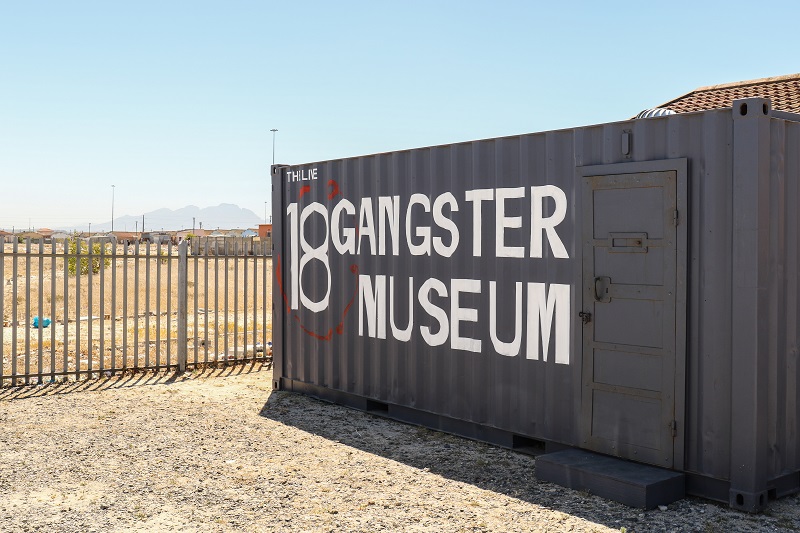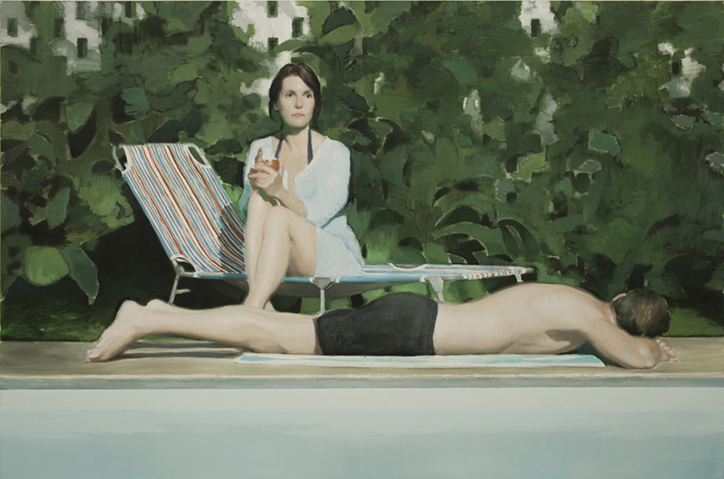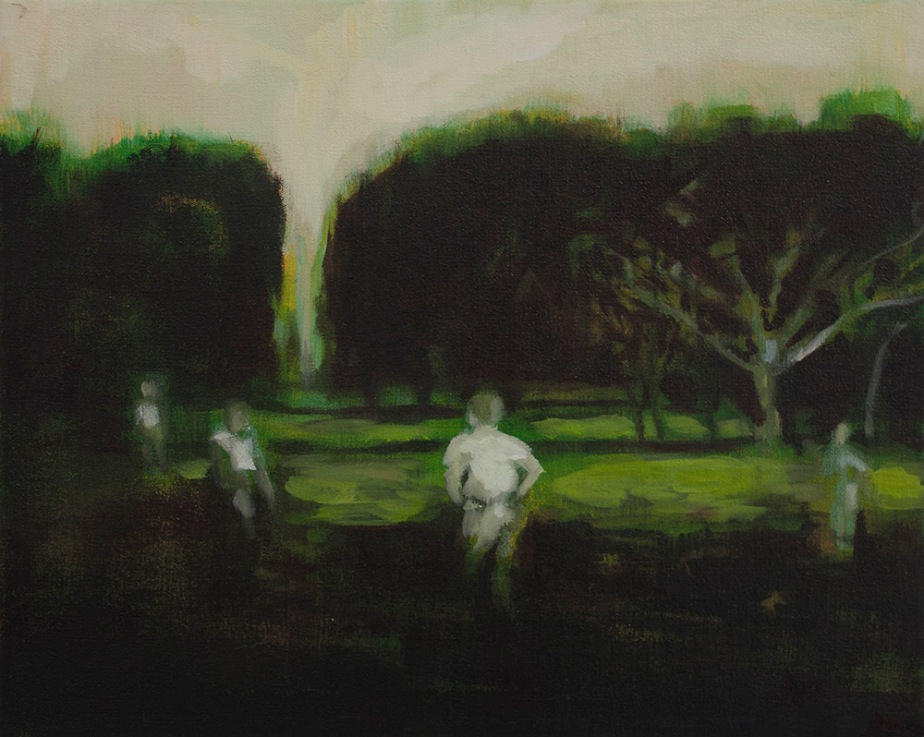A personal reflection into the ways in which contemporary artists address post-apartheid culture in South Africa
“Urbanity, the refusal to be moved by the abominations we are surrounded by and involved with, hangs over us all. The question of how passion can be so fleeting and memory so short-lived gnaws at me constantly. It is a deep-rooted question.”
(Kentridge 1999 p104)
INTRODUCTION
After a long absence and 23 years as a UK resident, I returned to South Africa in May 2018, to purposefully witness my changing relationship with a changing South Africa. I went with an open mind, received much generosity and interest, but realised that this country that I long for, cannot deliver. The psychological inheritance of apartheid entrenches separateness, and violent crime is endemic. The relationship between violence and escapism, especially ‘White’ expressions of this within an uncertain political landscape, intrigues me. Politics disrupts ‘utopia’ in the work of painters, Kate Gottgens and Elize Vossgater, and writer J.M. Coetzee, who comment on the life of the privileged in gated communities. Press images taken during apartheid are a significant record and contribute to the fabric of collective memory, which I intend to incorporate in my paintings. South Africa was rewriting its past, coming to terms with healing the nation through the Truth and Reconciliation Commission. I understand that political violence is a worldwide human problem, and consider implicit and explicit expressions of this.
THE PLAN
I met up with school friend, human rights lawyer, Lauren Jacobsen in London to plan this research. We discussed ‘White guilt’, the relationship we had with our country, our liberal education despite being at Pretoria Girls High, the contribution we each made in our capacity professionally, and whether returning to live there was a possibility. It was a reckoning with my past, and an introduction to artists, filmmakers and writers making work about the fallout of apartheid.
Ian Calvert, responsible for Red Bull’s philanthropic Amaphiko Projects, took me to Khayelitsha and Langa Townships. Issues of crime are being addressed through grassroots initiatives like the 18 Gangster Museum, set up to give a ‘taste’ of what prison is like to dissuade youths from getting involved with drugs which leads to crime. I also met ex- gangster Sihle Shabalala on another project that teaches coding to 18-24 year olds called Quirky 30. By 2020 it is estimated that 100% of this age group will be out of work, and crime will be out of control. I listened to farmers, business people, maids and madams, visited galleries and museums, and recorded everything in a diary to use as source material for my practice.
 18 Gangster Museum, Khayelitsha, South Africa, 2018
18 Gangster Museum, Khayelitsha, South Africa, 2018
WHOSE TRUTH /WHOSE AUTHORITY?
Liza Key discussed her films about ordinary people’s experience of A-PART-HEID, (2011) with me. It is obvious to many that apartheid will never be over, so burdened are we by the past. Her film REwind (2006) commemorates the 10th anniversary of the Truth and Reconciliation Commission hearings where 21 000 victims came forward to tell their ‘stories’ and 7000 perpetrators confessed their crimes. Musician, Philip Miller, who often works with William Kentridge, composed a cantata to which Key mixed segments of hearings, interviews and archive material. At the time, Key was researching a film about Winnie Mandela, and said, “She was not the ‘mother of the nation’, but a murderer responsible for 13-year-old Stompie’s controversial death”.
I plan to expose this uncommon knowledge in a painting.
MEMORY, REDEMPTION AND NATION BUILDING
In Negotiating the Past: The making of memory in South Africa, (Nuttall and Coetzee (ed.) 2002) question the role of memory in the Truth and Reconciliation Commission. Public hearings began in 1996, and covered the period 1 March 1960 – 5 December 1995. The purpose was to create a platform on which to rebuild the shattered country, giving birth to what Archbishop Tutu called the ‘Rainbow Nation’. Many believe South Africa teeters on the brink of self-destruction again, an ideological ruin plundered by successive corrupt governments.
Ed Young’s graphic work comments on what being African is about; no longer shocking or politically correct, “but a quick fix, in a fast culture”, (Jamal 2017 p21) and a visual contradiction to J.M. Coetzee’s description of privileged lives spun languidly in a white cocoon, “lives passed within walled gardens guarded by bulldogs; children of paradise, blond, innocent, shining with angelic light, soft as putti.” (Coetzee, 1990 p17)



Ed Young, All so Fucking African, Frieze, New York, 2016 (left)
Elize Vossgater, Silly White Girls, 2016, Oil on canvas, 550 x 496 cm (top right)
Petty Apartheid ‘Whites Only’ bench, District Six Museum, June, 2018 (bottom right)
GATED COMMUNITIES
Violent crime is a serious problem. Gated communities now comprise 15% of South African property offering private security, clinics, schools and swimming pools; these perfect oases suggest that we have not embraced integration. Despite a growing black middle class, the majority of poor black people still live in dangerous townships and work in white homes, almost as “non-people people”. (http://www.adjective.online Jamal, Vossgater’s Limp 2017). I am interested in developing paintings about this disconnected lifestyle, specifically looking at Jonathan Wateridge’s expressions of white privilege. UK based, but originally from Zambia, he constructs sets to recreate unreal poolside environments, which he describes as “a metaphorical space to raise issues about the West and its entitled relationship to its post colonial legacy.” (http://www.henipublishing, Wateridge 2016), Wateridge has agreed to a telephone interview with me in the New Year about his practice.
 Jonathan Wateridge, Pool, from the exhibition Enclave, 2016, Oil on Canvas
Jonathan Wateridge, Pool, from the exhibition Enclave, 2016, Oil on Canvas
ON THE SUBJECT OF VIOLENCE
Ashraf Jamal discussed contemporary South African artists making work in a post-apartheid era where ‘art disrupts the politics of despair’ at a talk I went to at UCL in October, ART AND LIES (2018). I related to Kate Gottgen’s, Prescience, a small painting of boys playing in a suburban garden. It anticipates something ominous is about to happen. Violence is implicit. Her handling of an almost monochrome palette uses a suffocating, brooding green, not shorthand for nature.
 Kate Gottgens, Prescience, 2015, Oil on canvas, 40.5 x 50.5cm cm
Kate Gottgens, Prescience, 2015, Oil on canvas, 40.5 x 50.5cm cm
The effect on paintings’ materiality by manipulation of lighting, colour, and pose to create unreal white worlds, an escape from violence, will be considered. Gottgens is “considered the Updike” of sub-urban South Africa with paintings that “remind us that at every turn we stand on shifting ground”. (Jamal 2018, p81) Her images present our shallow culture without judging it.
16 JUNE 1976, SOWETO RIOTS
On this day, which was also my 15th birthday, the Soweto Riots erupted. It was the beginning of the end of apartheid. We were cut off from the world in boarding school, innocent and oblivious, waiting on the grass beside the pool for my mother to bring my birthday cake. I was trying to paint the stillness of my perfect world when, simultaneously, the country was burning. It is a psychological landscape bearing witness vicariously and where absence is both physical and mental. I referenced art history in the treatment of the relaxing grouped figures in Manet’s Le Dejeuner Sur L’Herbe (1862) and Jules De Balincourt’s interpretation of this with BBQ Sur L’ Herbe (2013).


Soweto Riots, 16 June 1976, Hector Pietersen, shot and killed by police, Photo by Sam Nzima (left)
Vicarious Witness, my 15th Birthday, 16 June 1976, Soweto Riots (2018), Oil on Canvas, 130 x 180 cm. (right)
Broadening briefly to an international context, Hanaa Malalla’s Ruins Technique Talk on 22 November 2018, was about the destruction of her homeland, Iraq. It was a powerful, personal witness that encourages me to tell my story. The most political Turner Prize 2018 to date, shows films about politics and state violence in Forensic Architecture’s The Long Duration of a Split Second, which is time-lined using constructed and archive footage showing the destruction of a Bedouin village. Naeem Mohaiemen’s film is of a man trapped in a disused airport in Tripoli for years, where he combines memory and politics, “in a moment of exquisite pathos”. (https://www.theguardian.com Turner Prize 2018 review Tate Britain). How we cope with violence is questionable. In South Africa, the walls get higher, the lifestyle more exclusive, whilst crime and despair soar. My investigation reveals how politics has torn my beloved country apart, and after all the suffering; ask why we have created a hopeless place, with a fake white world in an unwanted split landscape?
REFERENCES:
Cameron, D., Christov-Bakargiev C., and Coetzee J.M., (1999) William Kentridge. London: Phaidon Press
Coetzee, J.M., (1990) Age of Iron. New York: Penguin
Fisher, P., 11 October 2016, Jonathan Wateridge, Enclave Exhibition (ONLINE) Available
http://www.henipublishing.com/2016/10/11/131016-jonathan-wateridge-enclave/ (Accessed 18 December 2018)
Jamal, A., (2017) In the World, Essays on Contemporary South African Art. Milan : SKIRA
Jamal, A., (2017) Non-people people: Elize Vossgatter’s ‘Limp’. (ONLINE) Available from http://www.adjective.online/2017/04/21/non-people-people-ashraf-jamal/ (Accessed 21 November 2018)
Jamal, A., (2018) Art and Lies, Open Talk, UCL. 4 October 2018
Key L., (2018) Conversation about REwind,(2006) A.Part.Heid. (2011) and Winnie Mandela.
Nuthall, S., and Coetzee, C., (1998) Negotiating the Past, The Making of Memory in South Africa. South Africa: Oxford University Press
The Guardian, Adrian Searle, Mon 24 Sep 2018, Turner Prize (ONLINE) Available from https://www.theguardian.com/artanddesign/2018/sep/24/turner-prize-2018-review-tate-britain-naeem-mohaiemen-luke-willis-thompson-forensic-architecture-charlotte-prodger, (Accessed 2 December 2018)
BIBLIOGRAPHY
BOOKS
Biko, S., (1978) I write what I like. UK: Bowerdeen Press
Biro, M.,(1998) Anselm Kiefer and the Philosophy of Martin Heidegger. Cambridge University Press
Cameron, D., Christov-Bakargiev C., and Coetzee J.M. (1999) William Kentridge. London: Phaidon Press
Coetzee, J.M., (2007) White Writing: On the culture of letters in South Africa, 2nd edn. South Africa: Pentz Publishers
Coelewij, L,. Sainsbury, H., and Vischer T., Marlene Dumas, The Image as Burden. London: Tate Publishing
Coetzee, J.M., (1990) Age of Iron. New York: Penguin
De Balincourt J., Jules De Balincourt
Hamilton, J., (2003) Hughie O ’Donoghue, Painting. Memory. Myth. London: Merrell Publishers
Jamal, A., (2017) In the World, Essays on Contemporary South African Art. Milan : SKIRA
Joyce, P., (1990) The Rise and Fall of Apartheid. Cape Town: Struik Publishers
Lunn, F.,(2013) Dexter Dalwood, Centre PasquArtBiel, Gagosian Gallery. UK; Cornerhouse Publications
Marlow T., (2015) Ai Weiwei in Conversation. London: Royal Academy of Arts publication
Mitchell, W.J.T.,(1994) Landscape and power. Chicago: University of Chicago Press.
Morton T., (2004) Dextor Dalwood, History of the eye. Switzerland: Gagosian Gallery
Nuthall, S., and Coetzee, C., (1998) Negotiating the Past, The Making of Memory in South Africa. South Africa: Oxford University Press
Princenthal, N., Basualdo, C., and Huyssen, A., (2000) Doris Salcedo. London: Phaidon Press
Schama, S.,(2004) Landscape and Memory. 2nd edn,. London: Harper Perennial
Valli,M. and Dessany, M.(2014) A Brush With The Real, Figurative Painting Today. London: Laurence King Publishing Ltd
Autobiographies/ Memoir
Ebrahim, N., (1999) Noor’s Story, My life in District Six. Cape Town: IM Publishing
Galassi, J., (2006) Ezulwini, Place of Heaven. Cape Town: New Africa Books
Gevisser, M., (2014) Lost and Found in Johannesburg. Jeppestown: Johnathan Ball Publishers
Hall, S., (2017) Familiar Stranger, A life between two Islands. London: Penguin Random House
Mandela, N., (1994) Long Walk to Freedom. Great Britain: Little Brown and Company
Said, E. W., (1999) Out of Place. London: Granta Books
Slovo, G., (1997) Every Secret Thing, My family, My country. GB: Little Brown and Company
Tutu D., and Lama, D,.(2016) The Book of Joy, with Douglas Abrams. London: Penguin Random House
Tyson, H., (2006) On My Watch, Behind the News -Book 1. South Africa: Print On Demand.
Wiesel, E., (2006) Night. London: Penguin Classics
ESSAYS/ ON-LINE REVIEWS/ARTICLES
Ashraf, J., Non-people people: Elize Vossgatter’s Limp. (ONLINE) Available from http://www.adjective.online/2017/04/21/non-people-people-ashraf-jamal/ (Accessed 21 November 2018)
Chutel, L., South Africa’s gated communities are building higher walls (January 2018)(ONLINE)<file:///Users/jacquichapman/Desktop/Johannesburg’s%20gated%20communities%20echo%20apartheid->era%20segregation%20in%20South%20Africa%20%E2%80%94%20Quartz%20Africa.htm > (Accessed 19 November 2018)
Turner Prize (2018): Forensic Architecture, Naeem Mohaiemen, (ONLINE) Available from http://www.tate.org.uk/press/turner-prize-2018 (Accessed 2 December 2018)
The Guardian, Adrian Searle, Mon 24 Sep 2018, Turner Prize (ONLINE) Available from https://www.theguardian.com/artanddesign/2018/sep/24/turner-prize-2018-review-tate-britain-naeem-mohaiemen-luke-willis-thompson-forensic-architecture-charlotte-prodger, (Accessed 2 December 2018)
Morrisson, T., March 23 2015, No Place for Self Pity, No Room for Fear. (ONLINE) Avaialable from < https://www.thenation.com/article/no-place-self-pity-no-room-fear/>(Accessed 4 Dec 2018)
Milner, D. Tuesday 30 January 2018, “The Painting you start is hardly ever the painting you finish”, Jonathan Wateridge (ONLINE) Available from
https://www.itsnicethat.com/articles/jonathan-wateridge-painting-art-300118
(Accessed 9 Dec 2018)
Fisher, P., 11 October 2016, Jonathan Wateridge, Enclave Exhibition (ONLINE)
http://www.henipublishing.com/2016/10/11/131016-jonathan-wateridge-enclave/ (Accessed 18 December 2018)
TALKS
Jamal, A., (2018) Art and Lies, Open talk, UCL. 4 October 2018
Malalla, H, (2018) Ruins Technique Talk, Wimbledon College of Art
FILMS
Weiwei, A., (2017) Human Flow
Lynch, D.,(1986) Blue Velvet
Fischer, B., (2017) An Act of Defiance
Key, L., (2011), A.PART.HEID (2016) REwind
Slovo, S., (1988) A World Apart
Kentridge, W., (1996) Felix in Exile, History of the Main Complaint
ARCHIVE PHOTOGRAPGHY
Kuus, J., and McDonald, T., (1987) South Africa in Black and White, Great Britain:HARRAP
Nzima, S., Hektor Pietersen, Soweto Riots copyright permission, Sharyn Carroll http://www.swova.org/2015/06/june-16th-1976-reflections-on-south-african-youth-day/ (Accessed 10 September 2018)
Poetry
Mtshalii O. M., (1983) Sounds of a Cowhide Drum. Oxford University Press
Couzyn, J., (1985) Life By Drowning, Bloodaxe Books Ltd, Newcastle upon Tyne
Songs
Mdingi M., Senzenina, Anti-apartheid struggle anthem, (Youtube), Cape Town Youth Choir
FIND:
Impey A., Hearing Landscape Speak, on-line conference
(How journey, memory and land are intrinsically intertwined with cultural identity and livelihood)
Adams D., Joseph Beuys: Pioneer of Radical Ecology,
Lanzmann C., Shoah, Film about the Holocaust
Serote, To Every Birth Its Blood
Nuttall, S., Beautiful Ugly
Cole, E., (1967) House of Bondage, New York (Black Miners)